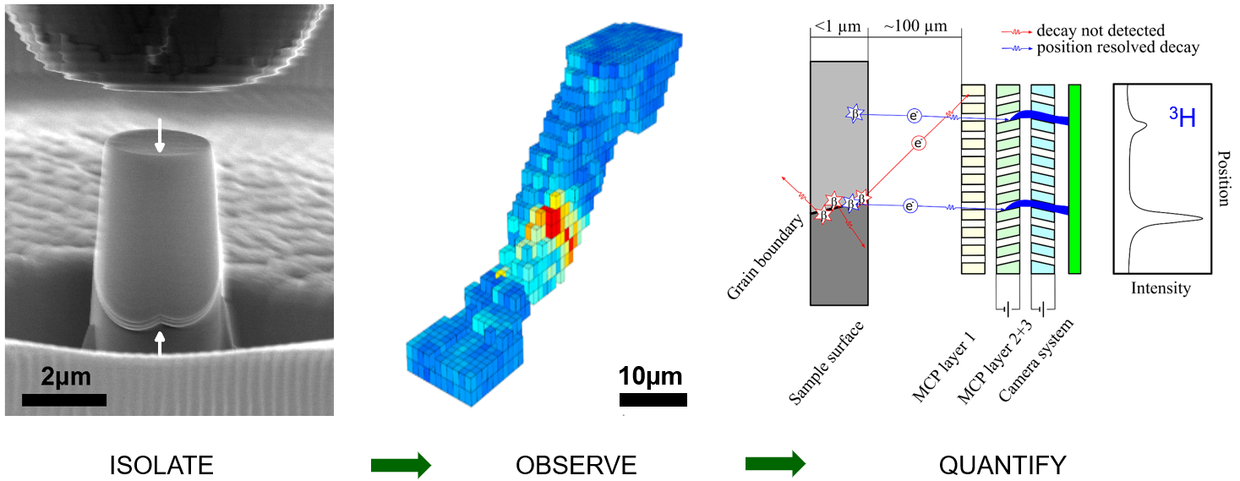Hydrogen Micromechanics

Green hydrogen plays a key role in the EU strategy for energy system integration and helps to achieve climate neutrality and decarbonization in a cost-effective manner. Contrasting the extensive research and industrial effort in scaling up the production, transportation, and storage of hydrogen in the past decade, hydrogen embrittlement still casts great safety risks and causes catastrophic failure until today. It is well-accepted that all mechanisms of hydrogen embrittlement materialize at the scale of individual defects, such as dislocations, grain- and phase-boundaries, yet we are still missing a correlative measurement of the mechanical behavior of individual defects and the local hydrogen content, which is urgently needed to assess the occurrence, importance, and magnitude of mechanisms responsible for hydrogen embrittlement.
Funded by the ERC Consolidator Grant (project TRITIME), our Hydrogen Micromechanics group aims to develop a new correlative deformation/hydrogen sensing approach to facilitate the isolation, observation, and quantification of hydrogen with high spatial resolution, hence facilitating the investigation of hydrogen embrittlement mechanisms by tritium-based micromechanics. We adopt small-scale mechanical testing on samples containing only a few well-defined crystal defects, whose properties will be observed and measured by in situ micromechanical experiments in the scanning electron microscope and at synchrotron beamlines. Simultaneously, we will monitor the local hydrogen content by observing the decay of tritium with high spatial resolution. In addition, post-mortem analysis using atom probe tomography and secondary ion mass spectroscopy will take advantage of the reduced mobility of tritium. In doing so, we aim to set the base for a mechanism-based optimization of microstructures used in the storage and transportation of hydrogen, which will be an indispensable tool for Europe's hydrogen strategy.
